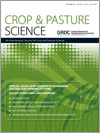Western Australian grain production is dominated by wheat, but growing wheat continually in unbroken sequences leads to increasing problems with soil nutrient depletion, root and leaf disease build-up, high weed burdens, and possibly other less well-defined production constraints. These can adversely affect both production and grain quality. Including breaks in the crop sequence in the form of break crops, pasture, or fallow can reduce these problems, but these breaks can be expensive to implement, in terms of both direct cost and forgone revenue. It is therefore critical to predict the response of subsequent wheat crops to a break in order to choose crop sequences rationally.
We conducted a 4-year experiment at Wongan Hills, Western Australia, evaluating how wheat productivity in a wheat-based cropping sequence is affected by including wheat, barley, lupins, triazine-tolerant and Roundup Ready® canola, oaten hay, volunteer pasture, serradella pasture, and chemical fallow. Wheat yield responded positively to fallow, lupins, oaten hay, volunteer pastures and serradella but not to barley or canola when compared with continuous wheat. Responses depended on seasonal conditions; in a dry year, a very large response occurred after fallow but not after lupin or serradella, whereas in a wetter year, there were large responses after these crops. Fallowing, cutting hay, crop-topping lupins, and spray-topping volunteer and serradella pasture all reduced seedset of annual ryegrass dramatically, and reduced weed competition was a major contributor to the observed break crop responses. Nitrogen fixation by lupins and serradella and water storage by fallow in a dry year were also important, but soilborne diseases did not contribute to wheat yield responses. Some yield responses persisted for at least 3 years, and the contribution of effects of weed competition to yield responses increased over this time. These results emphasise the importance of understanding which productivity constraints are present in a cropping system at a given time when deciding whether a break is necessary and which is the most appropriate break. The results also emphasise the importance of managing the wheat crop after a break to maximise the response and its longevity.





